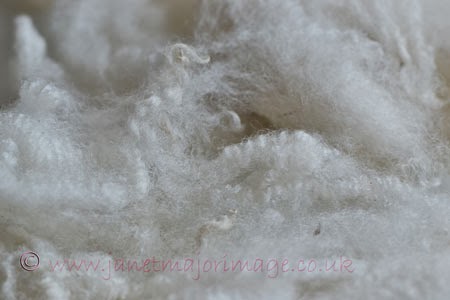Well what a
sunrise, worth a wet day to get this!
We decided to have a quiet morning, the opening ceremony was taking place at Mareel , also at the Hay's Dock area of Lerwick. Mareel is another great facility for Shetland, it is 'new' to us as it was being built when we were last there. It has a cafe, which is open well into the evening, and overlooks the waterfront, and lots of cinema screen. Another great place to meet people.
We drove to Hay's Dock and went to the Hub and I thought I'd have a nice quiet spin, Netta ( the young lady from Israel watched me). She learnt to use a drop spindle yesterday and I left her having a go on my Joy spinning wheel being helped by another lady when I went to lunch. This is an example of what happens at the Hub! Netta is coming up to Unst for the Designing a Fine Lace Scarf Workshop that I am going on Wed, so we wonder who the other 2 participants are.
We bump into each other again as we queue to go into the opening ceremony and I admire her first spin yarn on a wheel- a great achievement! Netta's story of how she found Shetland Wool Week is amazing and the map of places where people have come from is filling up - just incredible. The array of different hats was breathtaking and eventually we go into the hall and the ceremony starts. Stalls around the outside of activities on offer during the week, with a chance to talk to the leaders, wonderful music, wine and super cake, some speeches, a chance to other wool week paticipants and it really feels like this is happening now!
We drove to Hay's Dock and went to the Hub and I thought I'd have a nice quiet spin, Netta ( the young lady from Israel watched me). She learnt to use a drop spindle yesterday and I left her having a go on my Joy spinning wheel being helped by another lady when I went to lunch. This is an example of what happens at the Hub! Netta is coming up to Unst for the Designing a Fine Lace Scarf Workshop that I am going on Wed, so we wonder who the other 2 participants are.
We bump into each other again as we queue to go into the opening ceremony and I admire her first spin yarn on a wheel- a great achievement! Netta's story of how she found Shetland Wool Week is amazing and the map of places where people have come from is filling up - just incredible. The array of different hats was breathtaking and eventually we go into the hall and the ceremony starts. Stalls around the outside of activities on offer during the week, with a chance to talk to the leaders, wonderful music, wine and super cake, some speeches, a chance to other wool week paticipants and it really feels like this is happening now!

I managed to sneak out and meet up with Michael for afternoon tea in Hay's Dock cafe before it closed and as we drove back to Levenwick we noted that it was getting rather windy, we might need to change our parking position again tonight!
The interesting thing was the picture taken of the event that went on fb and the front page of the Shetland Times had my hat in the middle!
























